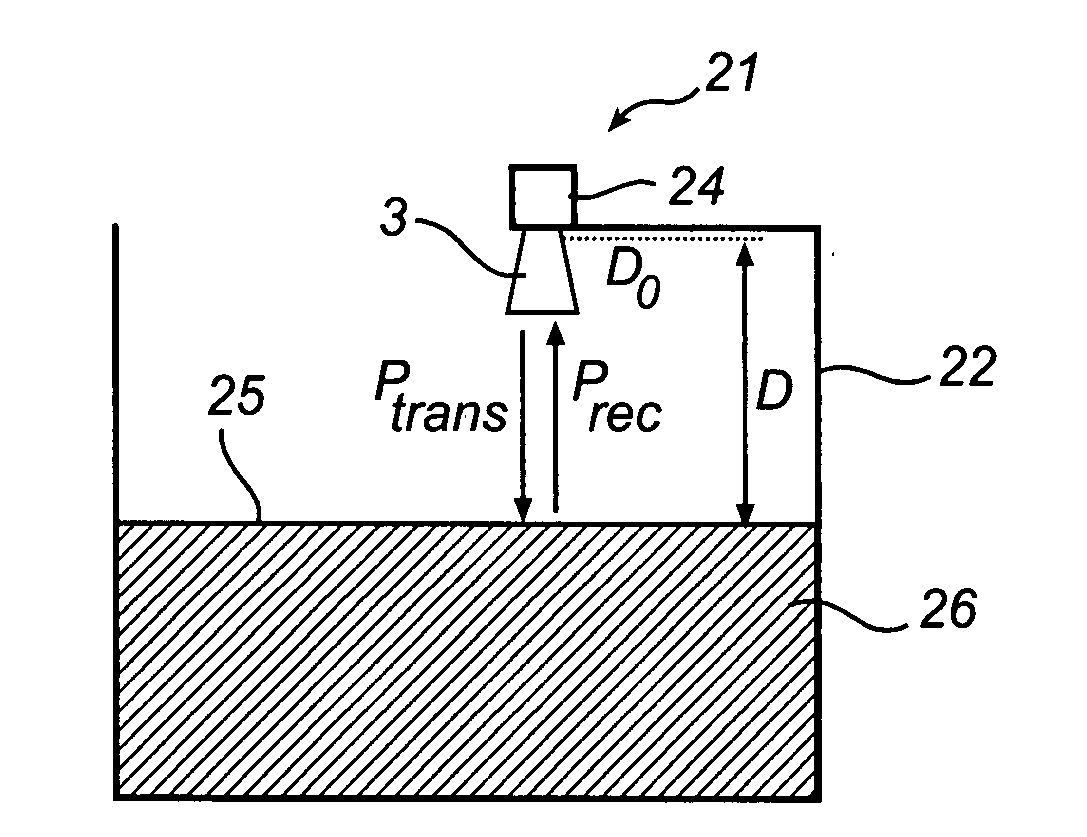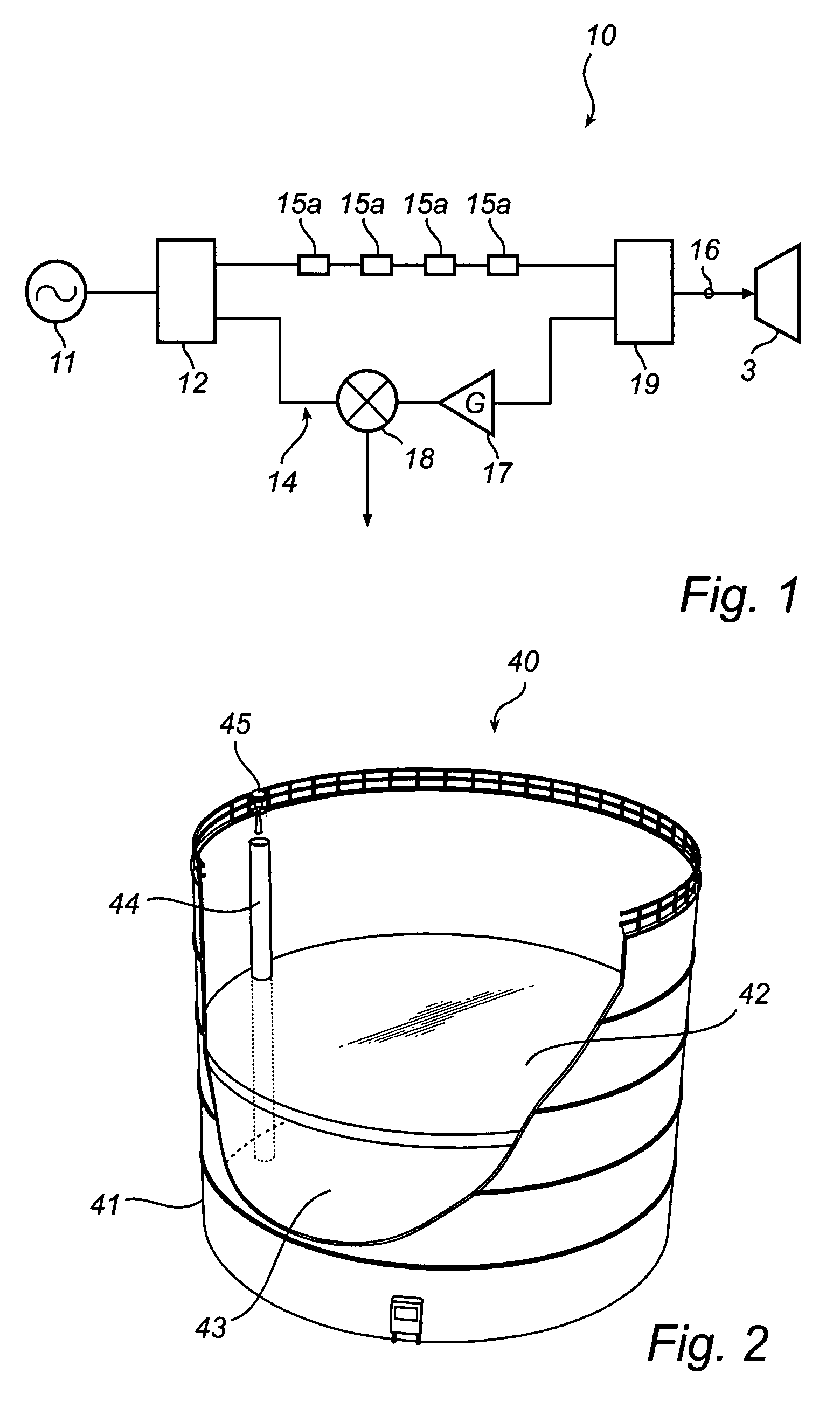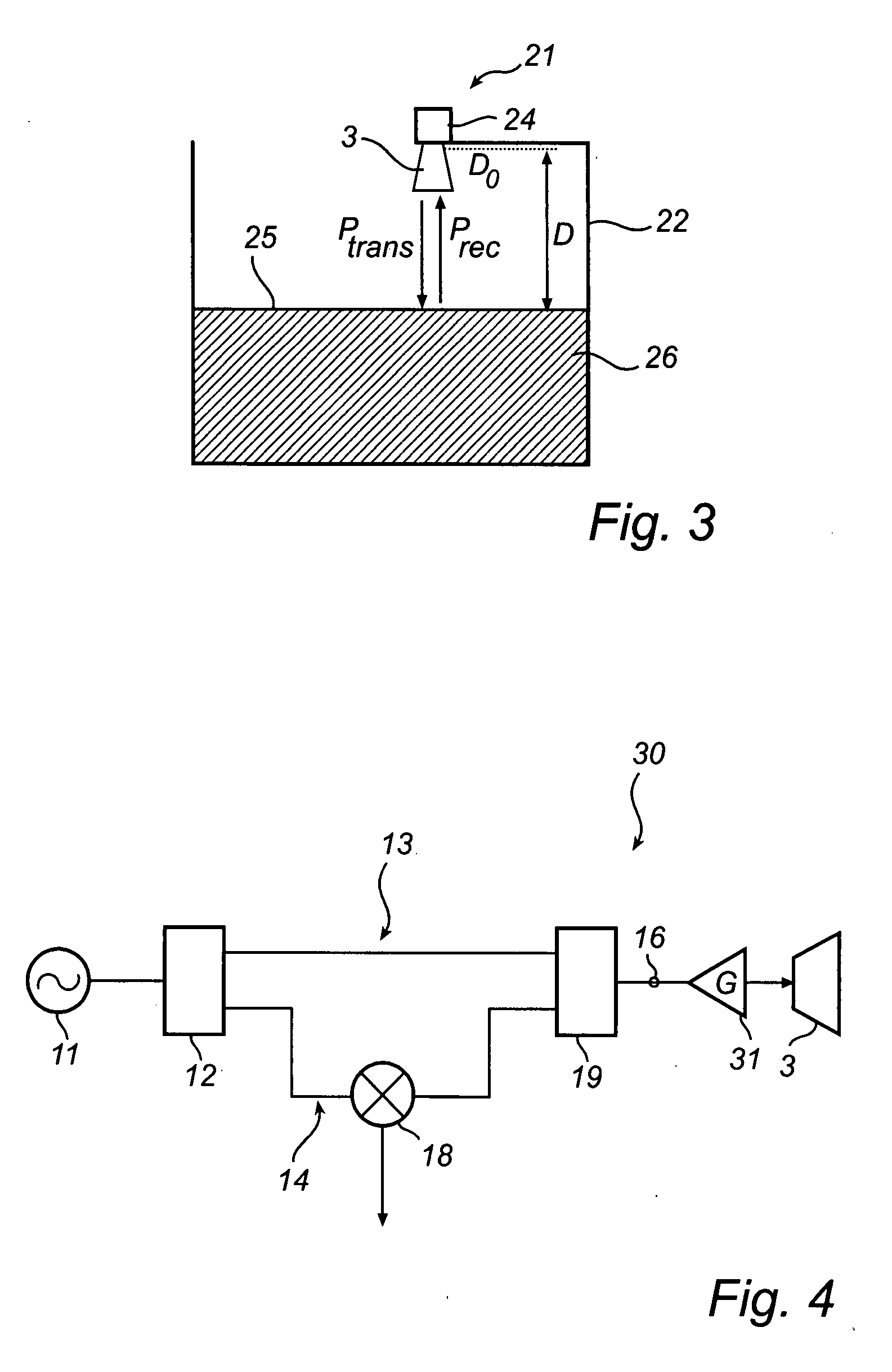Radar level gauge system having limited transmission power
- Summary
- Abstract
- Description
- Claims
- Application Information
AI Technical Summary
Benefits of technology
Problems solved by technology
Method used
Image
Examples
Embodiment Construction
[0032]In the present description, embodiments of the present invention are mainly described with reference to a radar level gauge system having a horn antenna and being mounted on an open tank containing a product. It should be noted that this by no means limits the scope of the invention, which is equally applicable to radar level gauge systems implemented in other applications, open, semi-open as well as closed, such as for level determination in open tanks, floating roof tanks, reservoirs, rivers and other watercourses, etc.
[0033]Moreover, the radar level gauge system according to the present invention may be equipped with any other type of antenna or mode converter, such as a patch antenna, a rod antenna or an array antenna.
[0034]FIG. 2 illustrates an exemplary semi-open application for the radar level gauge system according to the present invention, in the form of a floating roof tank system.
[0035]In FIG. 2, a floating roof tank system 40 is shown, with a tank 41 having a roof ...
PUM
 Login to View More
Login to View More Abstract
Description
Claims
Application Information
 Login to View More
Login to View More - R&D Engineer
- R&D Manager
- IP Professional
- Industry Leading Data Capabilities
- Powerful AI technology
- Patent DNA Extraction
Browse by: Latest US Patents, China's latest patents, Technical Efficacy Thesaurus, Application Domain, Technology Topic, Popular Technical Reports.
© 2024 PatSnap. All rights reserved.Legal|Privacy policy|Modern Slavery Act Transparency Statement|Sitemap|About US| Contact US: help@patsnap.com










